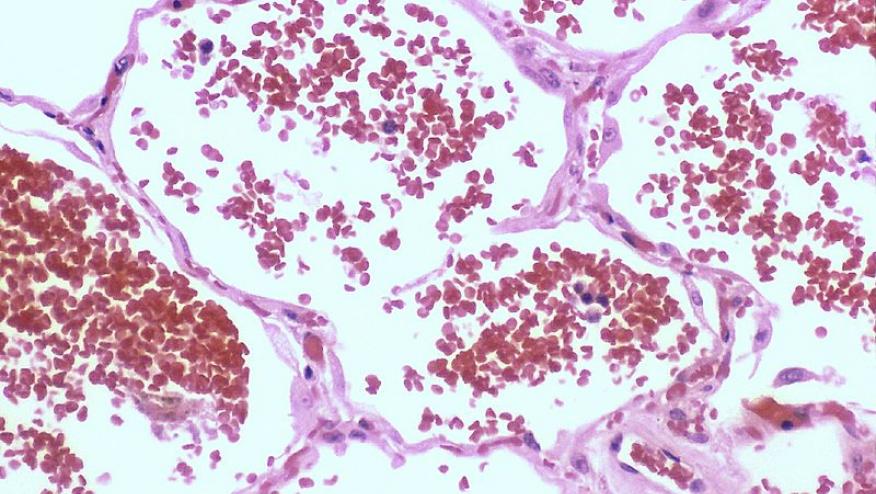PEXIVAS: Diffuse Alveolar Hemorrhage in ANCA-Associated Vasculitis Patients Save

A secondary analysis of the PEXIVAS study showed antineutrophil cytoplasmic antibody–associated vasculitis (AAV) patients complicated by diffuse alveolar hemorrhage (DAH) may have improved with plasma exchange and glucocorticoids, the results did not achieve significance.
Diffuse alveolar hemorrhage (DAH) is a potentially life-threatening manifestation of AAV, but there are limited data on the effects of specific treatment approaches for DAH due to AAV.
PEXIVAS (Plasma Exchange and Glucocorticoids in Severe Antineutrophil Cytoplasmic Antibody–Associated Vasculitis - NCT00987389) trial randomized 704 participants to receive either plasma exchange (PLEX) or no-PLEX and reduced or standard-dose glucocorticoids (GC). The severity of DAH was defined at enrollment based on O2 saturation (⩽ 85%) or use of mechanical ventilation).
DAH was seen at baseline in 191 (27%) patients (61 severe, 29 ventilated). DAH patients tended to be younger, frequently relapsing, PR3 positive, and had lower serum creatinine and were more frequently dialyzed (vs those without DAH).
Overall, 12% with DAH died within 1 year versus 6.6% without DAH. End-stage kidney disease and serious infections did not differ by DAH status or treatments.
PLEX Effects: DAH mortality was numerically lower (8/95; 8.4%) with PLEX versus 15/96 (15.6%) without PLEX (hazard ratio, 0.52; CI, 0.21–1.24). For those ventilated, PLEX offered no advantage in ventilator-free days versus no-PLEX.
Steroid Effects: DAH mortality was similar regardless of GC dosing regiment (13.5% with reduced GC versus 10.5% with standard GC; HR 1.33; CI, 0.57–3.13).
Further data are required to confirm or refute a benefit of PLEX or GC dosing on mortality.











If you are a health practitioner, you may Login/Register to comment.
Due to the nature of these comment forums, only health practitioners are allowed to comment at this time.